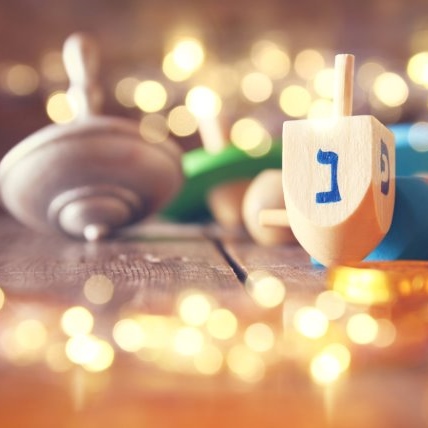
News

Is the Chanukah dreidel just a children’s toy?
JORDAN MOSHE
“We are all familiar with the story of how the dreidel was used by Jews to study Torah in secret while under observation by the Greeks,” says Stern, “but the truth is that this is a superficial understanding of something that has profound significance to us as Jews.”
Stern was one of the speakers at Chanukah Fest at Sydenham Shul on 4 November, a morning programme devoted to unlocking the deeper significance of Chanukah, hosted by the Academy of Jewish Thought and Learning.
Stern outlined the rules of the dreidel game, which most of us are quite familiar with. “We all know that the four letters – nun, gimmel, hey, and shin or pei – stand for nes gadol haya sham/po – a great miracle occurred there or here, depending on whether you’re in the diaspora or in Israel.”
“These letters also stand for different Yiddish words according to which the game of dreidel is played. Hei, or halb, allows you to take half of the pot. Gimmel, or gantz, let’s you take it all. Nun, for nisht, means you take nothing, and shin, meaning shtel arayn (put in), means you have to put one of your coins into the pot.”
So far, so good: the meaning of the letters doesn’t deviate from what most of us know. However, Stern said the top related not only to a children’s game, but to the four components of a person.
“Man consists of soul, body, mind, and an element of G-d. In Hebrew, these are neshama, guf, seichel, and Hashem – nun, gimmel, shin and hei – the same letters as those which appear on the dreidel. Not only that, but these four components all relate to particular aspects of Chanukah itself.”
He explained that Chanukah, which celebrates the triumph of the Maccabees over their Greek conquerors, forms part of the Jewish history of exile. The four exiles which the Jewish people have undergone have essentially made us who we are today, and all are captured in the four elements of a person.
“The Babylonian exile caused the spiritual ruin of the Jew, which relates to the soul. The Persian exile threatened our physical existence, meaning it is connected to the element of the body. The Greek exile of Chanukah involves the mind, because what troubled them most was our ideals and philosophies. Lastly, the Roman exile, which marked the beginning of our current exile, affected us in our totality. Because Hashem is contained in everything, this implicates the element of us which is G-dly.”
It heightens the relevance of the four letters of the dreidel, because it suggests that in spite of our exile, we maintain hope in redemption. Even when we’re in exile, said Stern, we continue to celebrate the miracle of the past, and thereby show that we believe in future redemption.
Stern then explored the numerical significance of the dreidel, adding another dimension to the top’s significance. “The total numerical value of the four letters is 358, the same value as mashiach. The very belief in our redemption is hinted in the dreidel. The three brachot (blessings) we recite when we light candles on Chanukah place emphasis on three different words: Chanukah, nissim (miracles) and she’hecheyanu (that Hashem has preserved us until now).”
“The first letters of each of these words – chet, nun and shin – can be used to spell nachash or snake, the numerical value of which is also 358. This suggests that perhaps sin, which is represented by the snake, will be atoned for by our redemption. We therefore transform exile into redemption through Chanukah, and express our hope for the future.”
Stern concluded by exploring the shape of the dreidel itself, relating it to the two life approaches it represents. “The dreidel features two shapes – a square and a circle. These are two aspects of Torah. The square represents rigidity, structure, the world of law. The circle has no end and no beginning, no rigidity, no one definition. This is the individual experience, complete with all of the unique emotion and feeling of one person.”
This, he said, is a true reflection of the Jewish experience. “If you function with law only, there is no true purpose to life. If you function with emotion only, it is completely unchecked and also serves little purpose. If we want to change, grow, and develop, we need to use the two approaches simultaneously. If we operate with firm guidelines alongside an emotional sensitivity, we can achieve meaning and purpose in life as people.”




